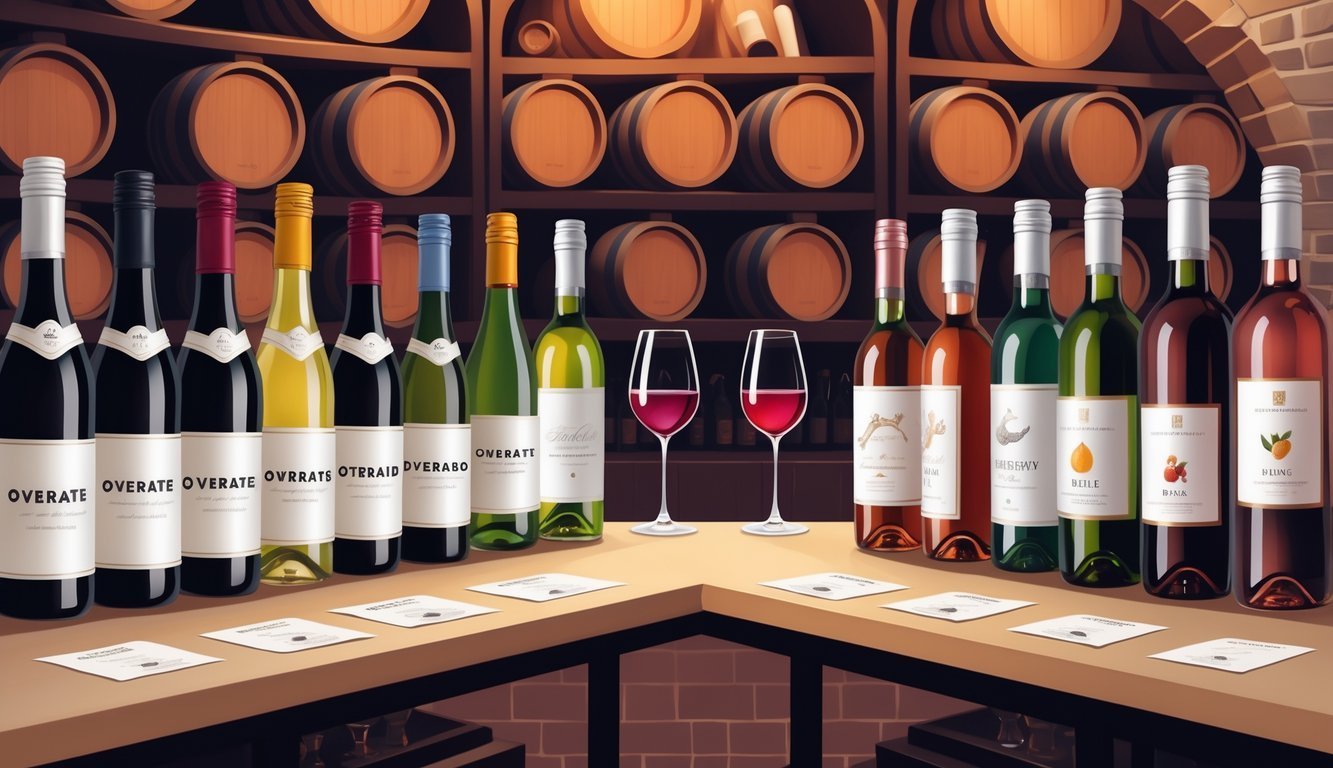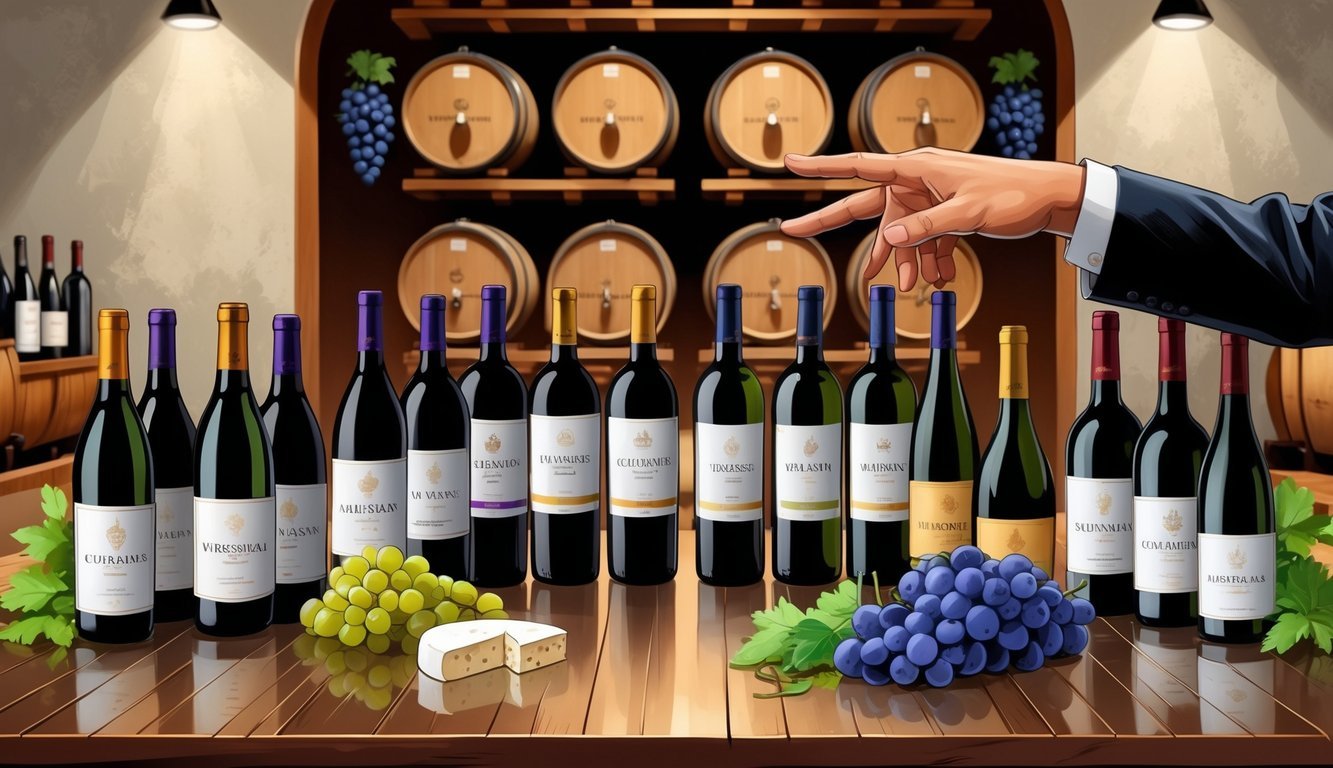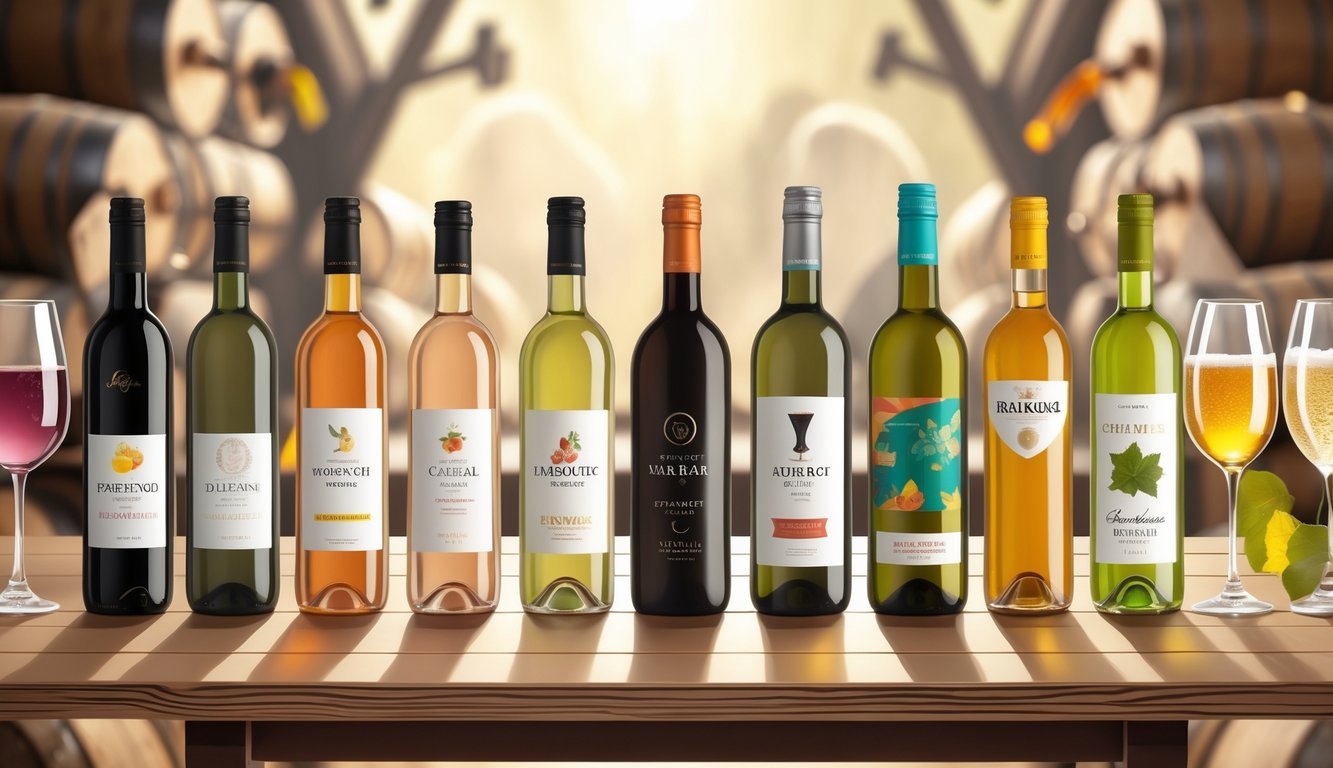PsychNewsDaily Publishers
100 Summit Drive
Burlington, MA, 01803
Telephone: (320) 349-2484
PsychNewsDaily Publishers
100 Summit Drive
Burlington, MA, 01803
Telephone: (320) 349-2484
Many popular wines, like California Sauvignon Blanc and Bordeaux Red Blends, often lack unique flavor and value, making lesser-known varieties a better choice for wine enthusiasts.

Not every wine deserves its reputation or hefty price tag. Some bottles get hyped up but, honestly, don’t deliver on taste or value. Figuring out which wines are overrated can really save you from disappointment and wasted money.
A lot of overrated wines, like those pricey Burgundies or the big-name Napa Cabernets, owe their popularity more to marketing than real quality. Some taste overoaked, or just… meh. Instead of falling for the hype, why not try some lesser-known varieties or regions? You’ll probably find better flavors and prices.
If you get the hang of spotting overrated wines, you’ll enjoy your wine more and keep your wallet happier. It’s a win-win, whether you’re trying to impress friends or just want a nice glass at home.

Some wines get all the attention but don’t always deliver. You’ll notice popular styles can taste generic, especially when big companies mass-produce them.
Knowing which wines to approach with caution helps you get better value and more enjoyment out of your glass.
California Sauvignon Blanc gets lots of praise for being fresh and lively. But let’s be honest, many bottles from big producers taste almost identical—grassy, citrusy, but not much else.
If you always trust the big-name critics or stick to popular guides, the options can feel limited and kind of dull. These wines often come across as sharp and acidic, missing the depth you might crave.
Instead, check out smaller California wineries that use older vines. Their Sauvignon Blancs usually offer more texture and subtlety. Or maybe branch out to different regions for richer styles.
Marlborough Sauvignon Blanc from New Zealand is a global favorite. It’s super bright, bursting with tropical fruit and herbal notes.
But the massive demand has led to mass production, and now a lot of Marlborough bottles taste almost exactly the same. You lose that special sense of place.
If you want something less cookie-cutter, look for limited-edition Marlborough bottles or ones labeled with sub-regions. Those often have more balance and complexity.
Bordeaux stands as a legendary wine region, especially for red blends featuring Merlot and Cabernet Sauvignon. Still, plenty of Bordeaux wines just don’t justify their steep prices.
You’ll see expensive bottles hyped up by critics, but sometimes they just taste heavy, tannic, and kind of flat. Some come across as over-oaked or so dry they’re tough to drink without food.
Instead, try wines from lesser-known Bordeaux sub-regions or small, family-run estates. You’ll often get more flavor and personality for way less money.
Champagne from big names like Veuve Clicquot or Moët & Chandon gets tons of love. But honestly, these champagnes focus more on brand than on unique character.
When you taste them next to smaller, artisanal champagnes, the big brands usually seem safe and predictable—light, toasty, and not exactly thrilling. Plus, they’re pricey.
If you want more interesting flavors and better value, go for grower champagnes. These smaller producers offer bottles with more personality and a real sense of place.
| Overrated Wine | Common Issue | What to Try Instead |
|---|---|---|
| California Sauvignon Blanc | Lacks complexity, sharp acid | Small producers, older vines |
| Marlborough Sauvignon Blanc | Too similar, mass-produced | Sub-regions, limited editions |
| Bordeaux Red Blends | Overpriced, tannic, muted | Lesser sub-regions, family estates |
| Champagne from Mass Producers | Uniform style, expensive | Grower champagnes with terroir |

If you’re bored with the usual suspects, there are plenty of exciting options out there. These wines come from off-the-beaten-path regions or smaller producers, but they pack great flavor and value.
Craving something sweet or semi-sweet but want a fresher vibe? Finger Lakes Riesling from New York is a total winner. The region’s cool climate keeps the acidity high, so the wines feel zippy and lively.
You’ll get flavors like green apple, lime, and sometimes a hint of minerality. Finger Lakes Rieslings often cost less than fancy European ones, but critics and wine lovers still rave about them.
Try a dry or off-dry bottle if you want a white wine that’s refreshing and pairs well with spicy food or seafood—without being cloyingly sweet.
Argentine Malbec is everywhere, but it can feel a bit one-note or just overhyped. If you’re after something with more depth, check out Malbec from smaller spots like Mendoza’s Uco Valley, or even try other local red grapes.
These wines usually have richer fruit, balanced tannins, and just a touch of smokiness from local oak. You can also find blends with Cabernet Sauvignon or Bonarda for extra structure.
With these picks, you get a fresher, more unique wine—usually at a wallet-friendly price.
Burgundy Pinot Noir has a big reputation, but the prices (and quality) can be all over the place. Instead of chasing expensive Burgundy bottles, try Pinot Noir from Oregon or New Zealand.
You’ll find the same vibrant acidity, bright cherry flavors, and earthy notes—just without the sticker shock. These regions offer that silky, delicate style Burgundy fans love.
If you’re set on Burgundy, look for lesser-known village names or boutique producers for better value.
Big-name Chardonnays often get too much attention, and they can taste overly buttery or oaky. Try boutique producers who focus on a more natural style—think balanced acidity and minerality.
Regions like Chablis or even some lesser-known countries make Chardonnay that’s crisp and fresh. You’ll taste green apple, pear, and citrus, not just oak.
Supporting small producers means you get a cleaner, more lively glass—and usually for less money, too.

Plenty of big-name wines get more hype than they deserve, while some hidden gems offer amazing taste and value. You don’t have to break the bank to find something special, and there are lots of beginner-friendly picks too.
Wines like Cabernet Sauvignon, Provence-style rosé, and big Champagne brands get a ton of praise. Some pricey Burgundies and labels like Dom Perignon seem overrated to many folks.
Skip the spendy Bordeaux or Burgundy and check out wines from Portugal or Spain. Tempranillo or Alvarinho bring tons of flavor without the big price tags.
Moscato and Pinot Grigio are easygoing and not too complicated. Lighter reds like Gamay or soft, fruity whites are also great starting points.
Italian Verdicchio or Greek Assyrtiko often wow collectors with their unique flavors. These wines are affordable and offer a fresh twist from the usual picks.
Absolutely. Regions like Argentina (Malbec) or Chile deliver great quality for less. Sometimes these wines even outshine pricier bottles from more famous places.
Check out small wineries or look into wine regions that most people overlook. Sometimes, the best bottles aren’t from the big-name places.
I like to read reviews from regular folks and sommelier blogs. They often point out great bargains you might miss otherwise.
If you’re at a wine shop, just ask for recommendations. Most staff love to share their favorites, and you might end up with something special.